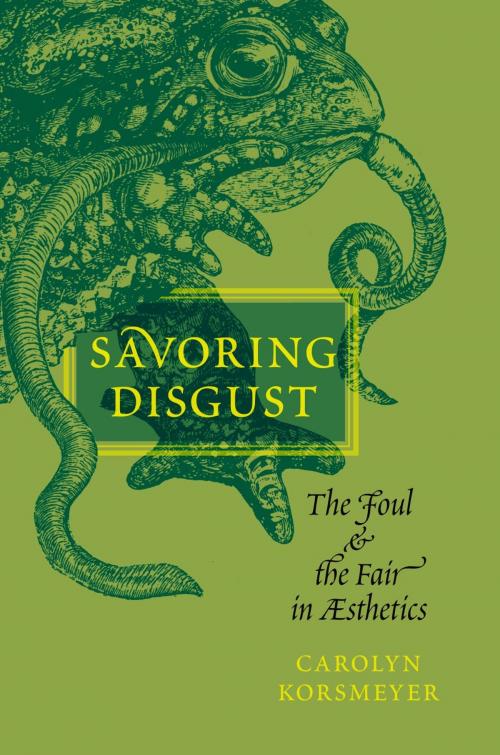Savoring Disgust
The Foul and the Fair in Aesthetics
Nonfiction, Religion & Spirituality, Philosophy, Aesthetics| Author: | Carolyn Korsmeyer | ISBN: | 9780190207847 |
| Publisher: | Oxford University Press | Publication: | March 17, 2011 |
| Imprint: | Oxford University Press | Language: | English |
| Author: | Carolyn Korsmeyer |
| ISBN: | 9780190207847 |
| Publisher: | Oxford University Press |
| Publication: | March 17, 2011 |
| Imprint: | Oxford University Press |
| Language: | English |
Disgust is among the strongest of aversions, characterized by involuntary physical recoil and even nausea. Yet paradoxically, disgusting objects can sometimes exert a grisly allure, and this emotion can constitute a positive, appreciative aesthetic response when exploited by works of art -- a phenomenon labelled here "aesthetic disgust." While the reactive, visceral quality of disgust contributes to its misleading reputation as a relatively "primitive" response mechanism, it is this feature that also gives it a particular aesthetic power when manifest in art. Most treatments of disgust mistakenly interpret it as only an extreme response, thereby neglecting the many subtle ways that it operates aesthetically. This study calls attention to the diversity and depth of its uses, analyzing the emotion in detail and considering the enormous variety of aesthetic forms it can assume in works of art and --unexpectedly-- even in foods. In the process of articulating a positive role for disgust, this book examines the nature of aesthetic apprehension and argues for the distinctive mode of cognition that disgust affords -- an intimate apprehension of physical mortality. Despite some commonalities attached to the meaning of disgust, this emotion assumes many aesthetic forms: it can be funny, profound, witty, ironic, unsettling, sorrowful, or gross. To demonstrate this diversity, several chapters review examples of disgust as it is aroused by art. The book ends by investigating to what extent disgust can be discovered in art that is also considered beautiful.
Disgust is among the strongest of aversions, characterized by involuntary physical recoil and even nausea. Yet paradoxically, disgusting objects can sometimes exert a grisly allure, and this emotion can constitute a positive, appreciative aesthetic response when exploited by works of art -- a phenomenon labelled here "aesthetic disgust." While the reactive, visceral quality of disgust contributes to its misleading reputation as a relatively "primitive" response mechanism, it is this feature that also gives it a particular aesthetic power when manifest in art. Most treatments of disgust mistakenly interpret it as only an extreme response, thereby neglecting the many subtle ways that it operates aesthetically. This study calls attention to the diversity and depth of its uses, analyzing the emotion in detail and considering the enormous variety of aesthetic forms it can assume in works of art and --unexpectedly-- even in foods. In the process of articulating a positive role for disgust, this book examines the nature of aesthetic apprehension and argues for the distinctive mode of cognition that disgust affords -- an intimate apprehension of physical mortality. Despite some commonalities attached to the meaning of disgust, this emotion assumes many aesthetic forms: it can be funny, profound, witty, ironic, unsettling, sorrowful, or gross. To demonstrate this diversity, several chapters review examples of disgust as it is aroused by art. The book ends by investigating to what extent disgust can be discovered in art that is also considered beautiful.















